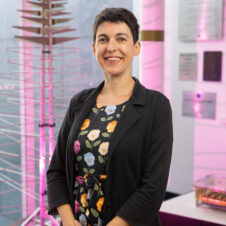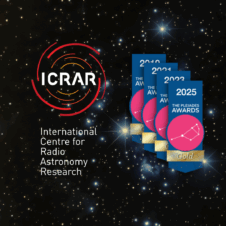
Solar panels, a sight that might soon be seen at the Murchison Radio-astronomy Observatory in Western Australia credit: Fernando Tomás
The Federal Government has announced that the Murchison Radio-astronomy Observatory (MRO) and the Pawsey High-Performance Computing Centre for SKA Science will receive $47.3 million for the development of solar and geothermal energy technologies through CSIRO.
The Sustainable Energy for SKA facility will be funded through the Sustainability Round of the Government’s Education Investment Fund (EIF).
The funding will support renewable energy infrastructure projects for the MRO and the Pawsey Centre, a significant step for these projects.
CSIRO Chief Executive Dr Megan Clark said the new project will accelerate the development of renewable energy technologies in Australia.
“The Sustainable Energy for SKA project will fund solar and photovoltaic technology to help power the Murchison site and the nation’s largest direct heat geothermal demonstrator to cool the Pawsey Centre supercomputer,” Dr Clark said.
“This project will also allow the practical application of research by scientists and students from all over Australia in renewable energy as well as in astronomy, computer science, engineering, geology and environmental management.”
“It is a unique opportunity for many different areas of science to come together and work on something that will benefit all Australians, the development and application of renewable energy technologies.”
The Pawsey Centre in Perth, co-located with CSIRO’s Australian Resources Research Centre, will become one of Australia’s largest direct heat geothermal demonstration sites. Researchers plan to address the heating and cooling requirements of not only the SKA data centre but the entire geosciences facility. They will also conduct research on the performance and longevity of geothermal wells.
The Pawsey High Performance Computing Centre for SKA Science will process more data from ASKAP every day than is contained in the world’s largest library.
“Innovation Minister Senator Kim Carr is in Europe now promoting Australia’s bid, including at the International SKA Forum in the Netherlands,” Dr Clark said. “A decision on the site is expected in 2012, so it is essential that we make as much progress as we can over the next two years – both technologically and diplomatically.”
“How the full SKA will be powered is a decision that still needs to be made. The addition of the renewable energy infrastructure to the MRO site will display one option,” says ICRAR Director Professor Peter Quinn.
A full scale hybrid solar storage and generation plant, coupled with sophisticated energy management systems, will also be built to service the remote Murchison Radio-astronomy Observatory about 700km north of Perth.
Both of these facilities have high electricity demands so the ability to feed that demand using on-site geothermal and solar renewable energy technologies will provide multiple benefits.
The Murchison Widefield Array (MWA) and CSIRO’s Australian SKA Pathfinder (ASKAP) are both based in the MRO and will benefit from the renewable energy infrastructure.

